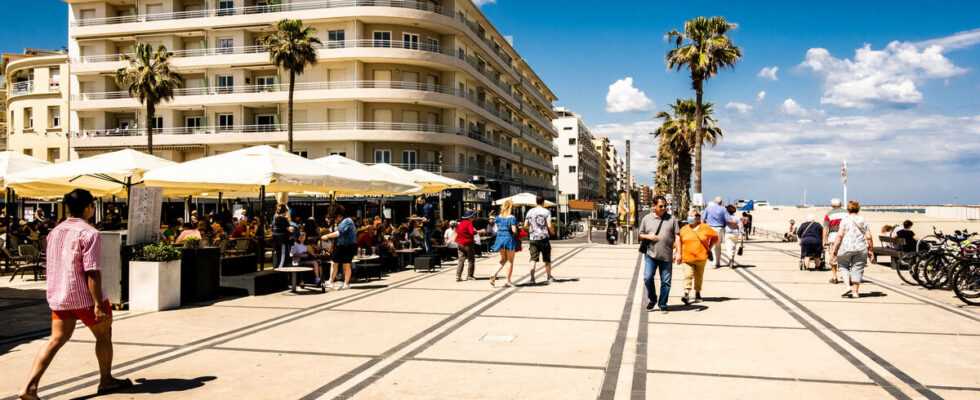Is the parenthesis of the pandemic closing for the tourism sector? Despite the war in Ukraine and travel restrictions still in place due to Covid-19, global tourism continues to recover, led by Europe and the Americas, without returning to pre-pandemic levels. According to the latest available figures from the World Tourism Organization (WTO), international tourist arrivals worldwide more than doubled (+130%) in January compared to the same period in 2021, with 18 million visitors. additional worldwide, “i.e. the equivalent of the total increase recorded over the whole of 2021”.
In 2019, global tourism receipts had reached 1,482 billion dollars, before being divided almost by three the following year because of the pandemic. While January confirms the recovery trend set in motion in 2021, the UNWTO nevertheless points out that the omicron variant has recently put a new brake on it and that international arrivals in January remained 67% lower than before the pandemic.
On the aviation sector, in very great difficulty since the first confinements in 2020, “This summer we will find 100% of the 2019 level on short and medium haul. On the other hand, on long haul, we will rather remain on 85%-90% of the 2019 level”. For Didier Arino, director of the Protourisme office, “It’s not the market that will be problematic, it’s the production cost of tourist stays, competitiveness, the match between products and purchasing power: the players are all increasing their prices, and for the moment it passes because people want to have fun. But we are reaching the limit of what is acceptable for a good number of customers”.
The “more promising” second trimester
All regions saw travelers return and thus were able to rebound from the low levels of early 2021. Europe in particular did three times better and the Americas twice as well. They still have half the way to go to regain their pre-pandemic tone.
The Middle East is also experiencing a boom compared to 2021 (+89%), according to the UNWTO, as is Africa (+51%), but these two regions are still very far from the tourism scores of 2019. And, unsurprisingly, it is Asia-Pacific, with several closed destinations, which plummets. In January, international tourist arrivals there were 93% lower than before the pandemic.
Better than yesterday and worse than tomorrow: according to the firm ForwardKeys, the second quarter of 2022 still seems “more promising for international travel worldwide than the first quarter”. For summer holidays, the sun and the sea in the Caribbean and Latin America are particularly popular. Costa Rica, Aruba in the Netherlands Antilles, the Dominican Republic and Jamaica are among the top 20 destinations and even exceed pre-pandemic levels.
In Europe, France, Spain, Portugal, Greece and Iceland are taking off, without however filling up with tourists as before the pandemic. France is doing well: tourists come back and they spend. International tourism receipts in February in the country “came closer to those of 2019”, to 2.7 billion euros, “up 1.5 billion compared to last year and -8% compared to 2019”, declared Jean-Baptiste Lemoyne, Minister in charge of Tourism during a telephone press briefing. The tourism sector in France represented, in 2019 before the pandemic, 7.4% of GDP and 9.5% of jobs.
According to Jean-Baptiste Lemoyne, France is “very well positioned” destination “number 1 in European travel for Americans, Belgians, Italians, Spaniards”. The French are “a European exception”, assures the Minister: “60% of them plan to stay in their country for the holidays. With a domestic base that will remain very strong and the return of an international clientele, this means that we are in a summer season that can be very, very dynamic.
Ile-de-France deserted
An improvement that has not yet been fully felt in hotels in France. The latter have not yet regained pre-health crisis attendance in the first quarter in France, the presence of foreign tourists being more than a third lower than it was in 2019, INSEE said on Wednesday. .
Overall, attendance at collective tourist accommodation, excluding campsites, expressed in number of nights, is 11.3% lower than its level in the first quarter of 2019, the institute announced in its economic report. In hotels, the decline is 16.4% compared to 1.2% in other collective tourist accommodation, and if the number of French tourists is still slightly below its level before the health crisis (−7 ,1%), that of tourists from other countries “remains significantly down, by -36.7%”, details INSEE.
This drop in attendance in the first quarter of 2022, compared to the same period of 2019, “concerns all categories of hotels, but it is a little less marked in upscale establishments”, according to available data. In 3-star hotels and 4- and 5-star establishments, the decline is less – -12.3% and -14.6% respectively – because the presence of French customers has “limited the impact of disaffection” foreign customers, unlike 1 and 2 star hotels and those that are not classified, where attendance is down 21.1% and 23.6% respectively.
In terms of geography, the decline in hotel occupancy in the first quarter of 2022 “is mainly concentrated in Ile-de-France” : 3.9 million fewer overnight stays, for a national drop of 7 million. Attendance also remains below its pre-crisis level, but to a lesser extent, in the mountain ranges (-3.1%) and on the coast (-6.4%), but the return of resident clientele, up 10.1% and 2.6% respectively compared to the first quarter of 2019, limits the impact of the absence of some foreign tourists.
